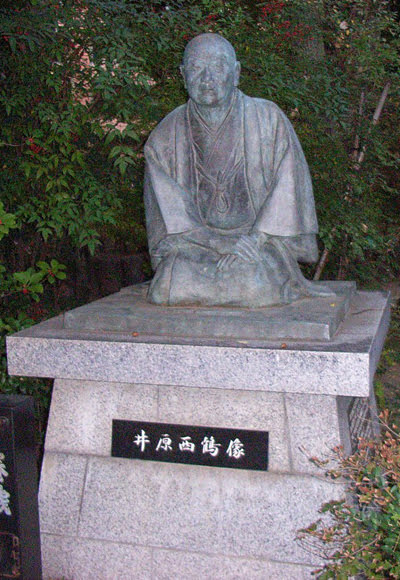Ihara Saikaku

Togo Hirayama born into a well-off merchant family in Osaka.
Begins to compose haikai no renga (linked verse).
Recognized as a hakai master. Under the pen name Ihara Kakuei, he begins to establish himself as a popular haikai poet.
Develops his own distinctive style of haikai poetry, which relies on the use of colloquial language to depict contemporary middle-class life. He also owns and runs a medium-sized business in Osaka.
Changes his pen name to the one we recognise today.
Wife dies.
He composes a thousand-verse hakai on her death in twelve hours, published as Haikai Dokugin Ichinichi (Haikai Single Day Thousand Verse).
Decides to become a lay monk and begins to travel all over Japan, leaving behind his three children to be cared for by his extended family and his business by his employees.
Returns to Osaka to find that his thousand-verse haikai poem was wildly successful and popular. Now pursues a career as a professional writer.
Publishes The Life of an Amorous Man. Gives up poetry for novels of the middle class in the Floating World.
The Great Mirror of Beauties: Son of an Amorous Man
Five Women Who Loved Love
The Life of an Amorous Woman
Twenty Cases of Unfilial Children
The Great Mirror of Male Love
Transmission of the Martial Arts
The Eternal Storehouse of Japan
Tales of Samurai Honor
Reckonings that Carry Men Through the World
Dies.